So you think it’s best to stay indoors during the dark winter months? With the right kit, lights, and other equipment, you can overcome your fear of the dark and ride year-round. We shine a light on how to make the most of riding in the dark, what’s legal, and what’s important!
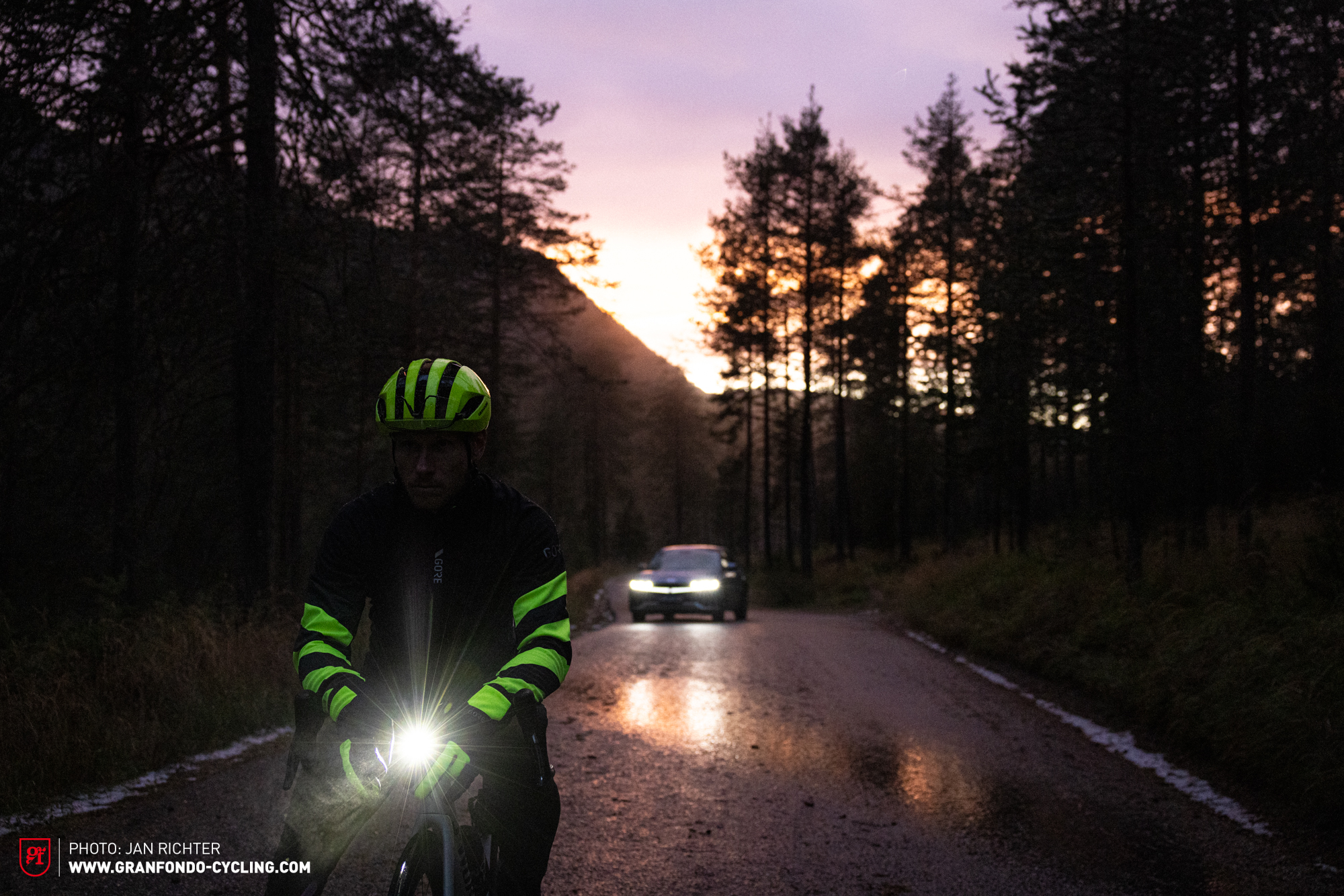
When others lie huddled up on their couches, or flood their living rooms with sweat on their turbo trainers, everything’s in hibernation, and the days are cold and dark, that’s when the wheat is separated from the chaff. The cold and dark reveals those with a true passion for cycling, riding regardless of the elements; members of the grit club, not the Zwift Club. Whether it’s a commute, a post-work ride to clear your head, or a training session, discipline alone is not enough to make winter riding safe and fun.
Afraid of freezing your digits off or not being seen? With the right equipment and know-how, you can increase your confidence and dispel the fear that often comes with riding in the dark. We braved the cold and dark for you in some GOREWEAR cycling kit to find out what really matters when riding in the winter. We’re out to prove that road riding can be fun even in adverse conditions, and show the indoor cyclists and couch potatoes how it’s done – they’ll be eating their words and our dust in the spring on the local circuit!

How do I increase my visibility and safety on the road?
Not all bike lights are made equal, and neither is winter cycling kit. There are several ways to increase both your safety and visibility, but you should bear a few things in mind. For example, knowing the difference between active and passive visibility, or that even the brightest light is useless if it’s positioned incorrectly. The alignment of the lights on your road bike can also be a sensitive issue.

Generally, there’s a distinction between active and passive visibility. Active visibility is provided by the lights on your bike, which emit light on their own. Many countries have regulations surrounding bike lights. However, it’s debatable whether the legal way is also the most sensible. Cyclists complain about the German StVO road rules, for example, according to which many commercial bike lights are illegal. These include tail lights that flash or are “too bright”, like the Garmin Varia RTL515. A lot of riders ask themselves whether there is such a thing as too bright when it regards their own safety, and still use them even if it means breaking the law because it keeps them alive.
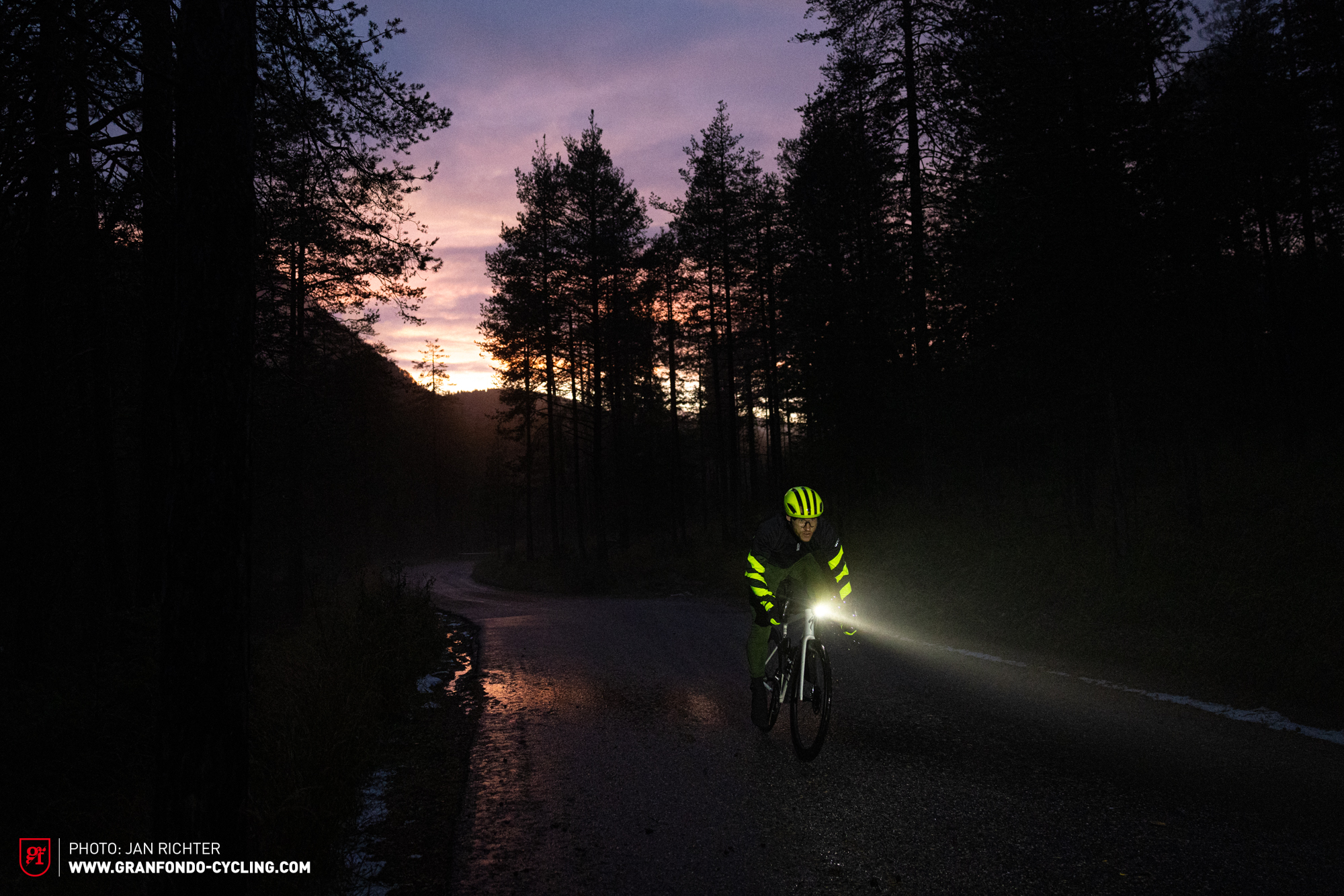
Sticking with Germany as an example, special rules apply to road bikes with regard to lighting. According to road traffic regulations (StVO) § 67, paragraph 11, there are special rules “for road bikes whose weight does not exceed 11 kg”. This concerns the obligation surrounding head- and tail lights as well as the type of lighting equipment. Unlike other bikes, road bikes don’t need to have lights unless you’re riding “at dusk, in the dark, or when visibility otherwise requires it.” Either way, lighting is probably the most important topic along with the kit when it comes to winter riding. That said, the best and brightest lights are of no use if they’re positioned incorrectly. It’s easy to mount the taillight too far down or let it get obscured by racks, bags or mudguards. The light of the head- and tail lights should project at an obtuse angle to guarantee visibility from the side, so that you’re seen by traffic at intersections, for example. It must also light up enough of the road ahead, without dazzling oncoming drivers.
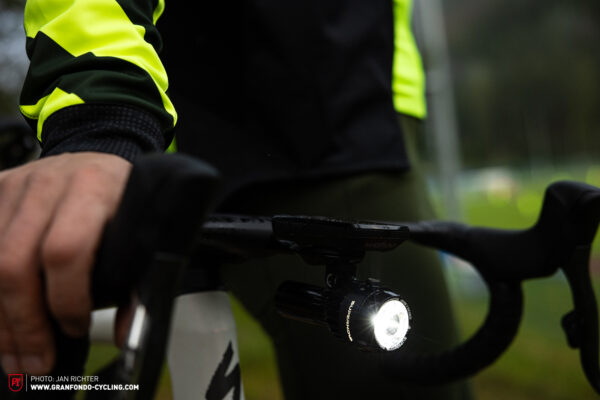

When it comes to making yourself seen in the winter, passive visibility is another decisive factor. This includes reflective high-visibility elements on your kit and bike. Reflectors need direct light to be visible, but neon colours are visible even without direct light. Sure, a high-vis vest and a few plastic reflectors will do the job, but the style police won’t let that fly – you can still look cool while feeling warm. Purpose-built winter kit often comes equipped with reflective details. This ranges from jackets that are completely covered in neon pink, to small, subtle reflective patches. As a general rule of thumb: bigger = better! Here, too, different countries have different regulations. A safety vest is mandatory in Spain, France, and Italy when riding in the dark and when riding through tunnels, though you don’t typically see riders adhering to this.

More than reflective – The other functions of appropriate winter riding kit
Winter has other pitfalls for road cyclists besides the darkness. First and foremost, the cold. This can lead to hypothermia due to the stark temperature difference between your body and the external environment. So, what should you look for, or what should good winter riding kit be capable of? We exchanged ideas with GOREWEAR’s apparel specialists, and we’ll show you what to look for using the examples of various GOREWEAR products with hi-vis and functional elements. Of course, special winter road riding kit doesn’t have to be used exclusively in the dark. You’ll often encounter poor daytime visibility in autumn and winter due to fog, rain, and so on. In these instances, hi-vis cycling apparel also reduces the risk of being overlooked.
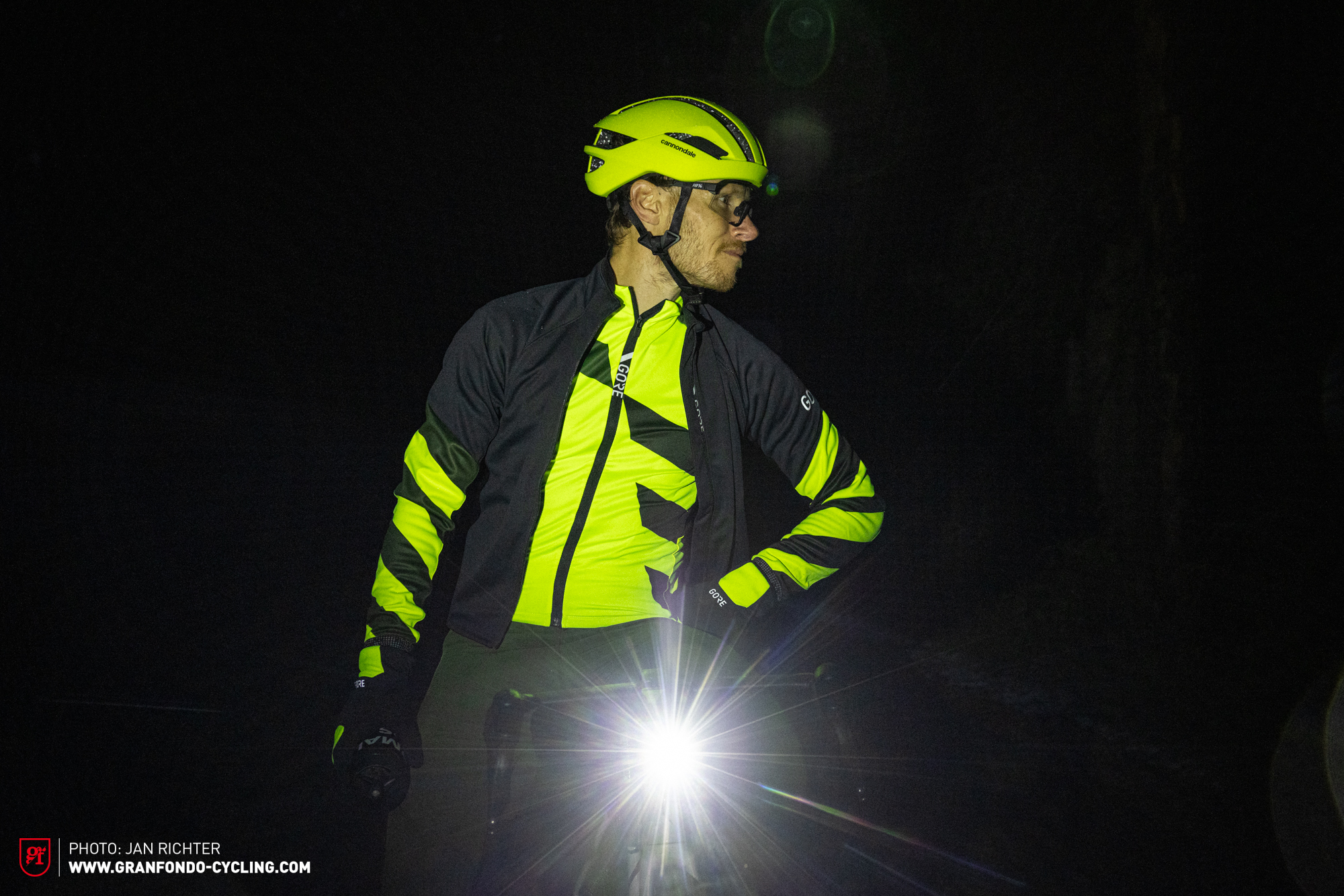
But high-end clothes will only work if they’re combined correctly – keyword: layers. The combination of different layers of clothing can help compensate for temperature fluctuations, providing warmth and protecting the extremities. Your outer extremities such as hands and feet, which are furthest from your core, are particularly affected by the cold. Despite the cold, however, you still sweat while riding. Highly breathable fabrics ensure that moisture from your body can escape, keeping you dry and thus keeping you warm. The wind is also an issue in winter – and not just because of strong winter headwinds – as it makes your body temperature drop even quicker. Windproof clothing allows significantly less cold air to pass through and thus protects your body from its icy chill.
Tips, tricks, and technique for cold and dark winter road riding

1. Turn the lights on too early rather than too late
If it’s too late, it could be too late. Turn on your lights even at the slightest hint of twilight.

2. Avoid busy roads
The national highway is certainly not the best route to take in the dark. Cycle paths, country roads, and other secondary roads are safer due to less traffic. Also look for roads with marked cycle lanes.
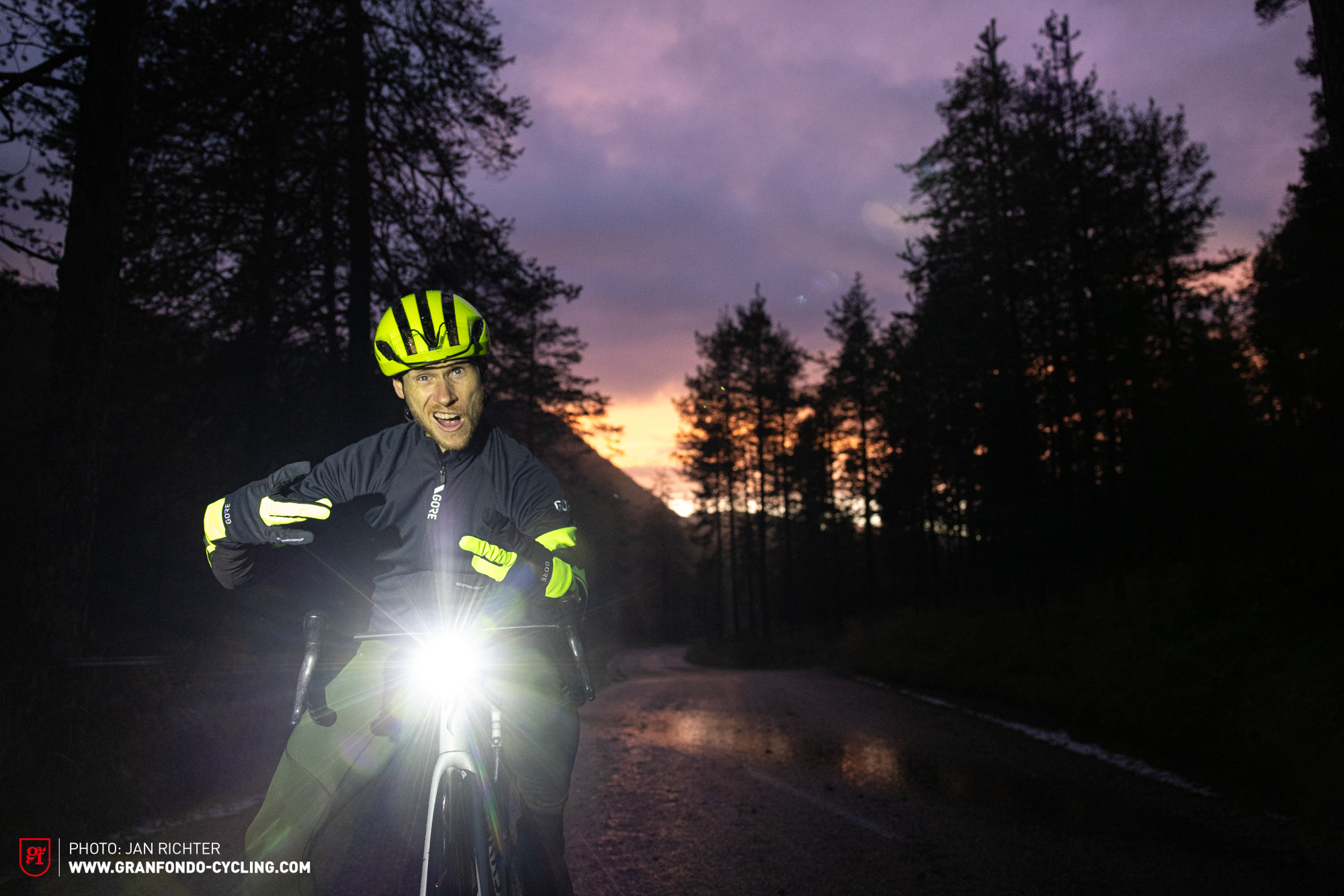
3. Better more light than too little, especially beyond city limits
A lot of light provides a lot of visibility. It pays to use powerful lights.

4. Wear clear lenses
Eyewear is a must, preventing dirt and spray from flying into your eyes. At night, however, the lenses should definitely be replaced with clear versions.
5. Warmth from the inside
A sip of tea from an insulated water bottle works wonders when it’s cold outside.
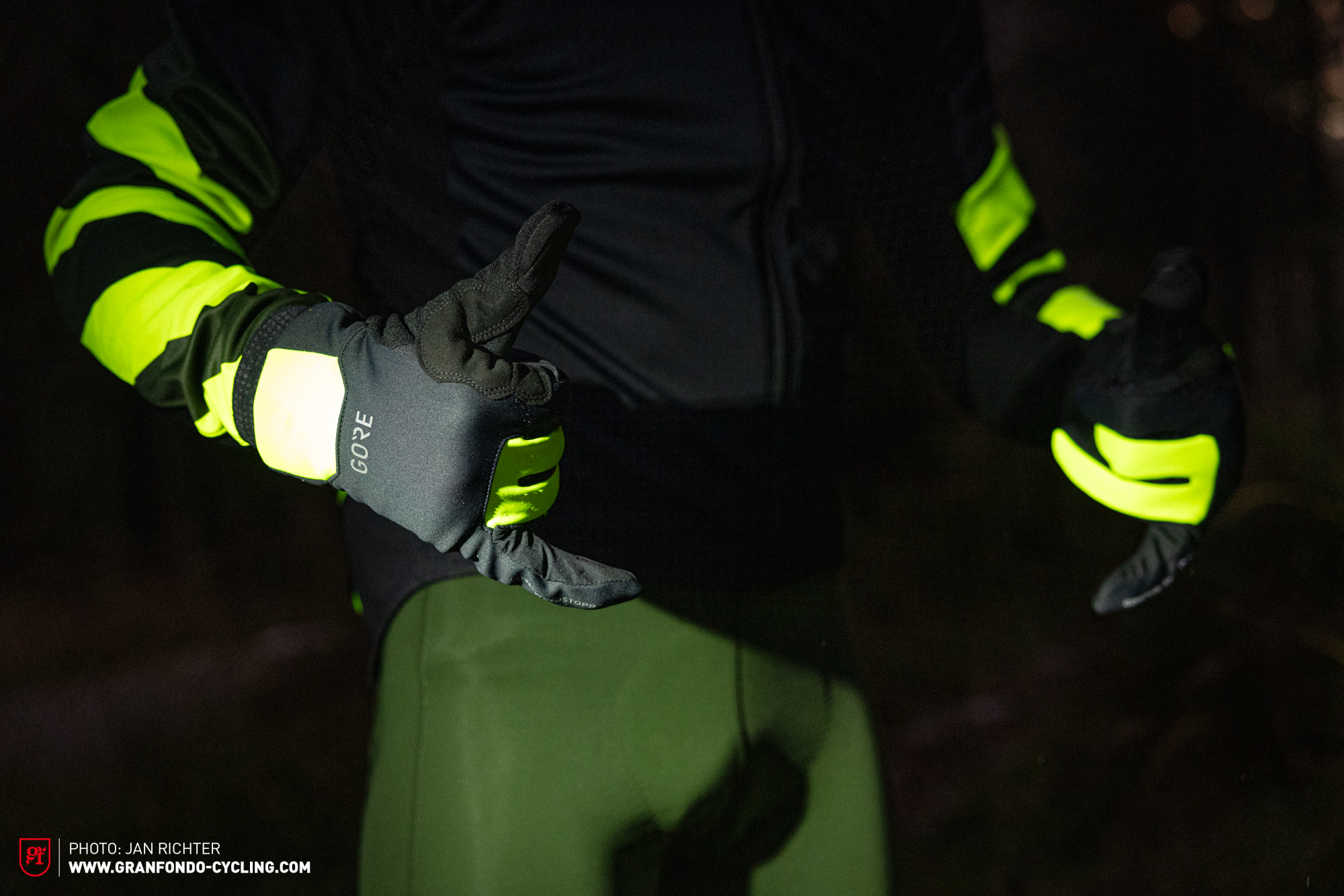
6. Wear clearly visible kit
With the right choice of riding kit, high-vis can still look (relatively) cool.
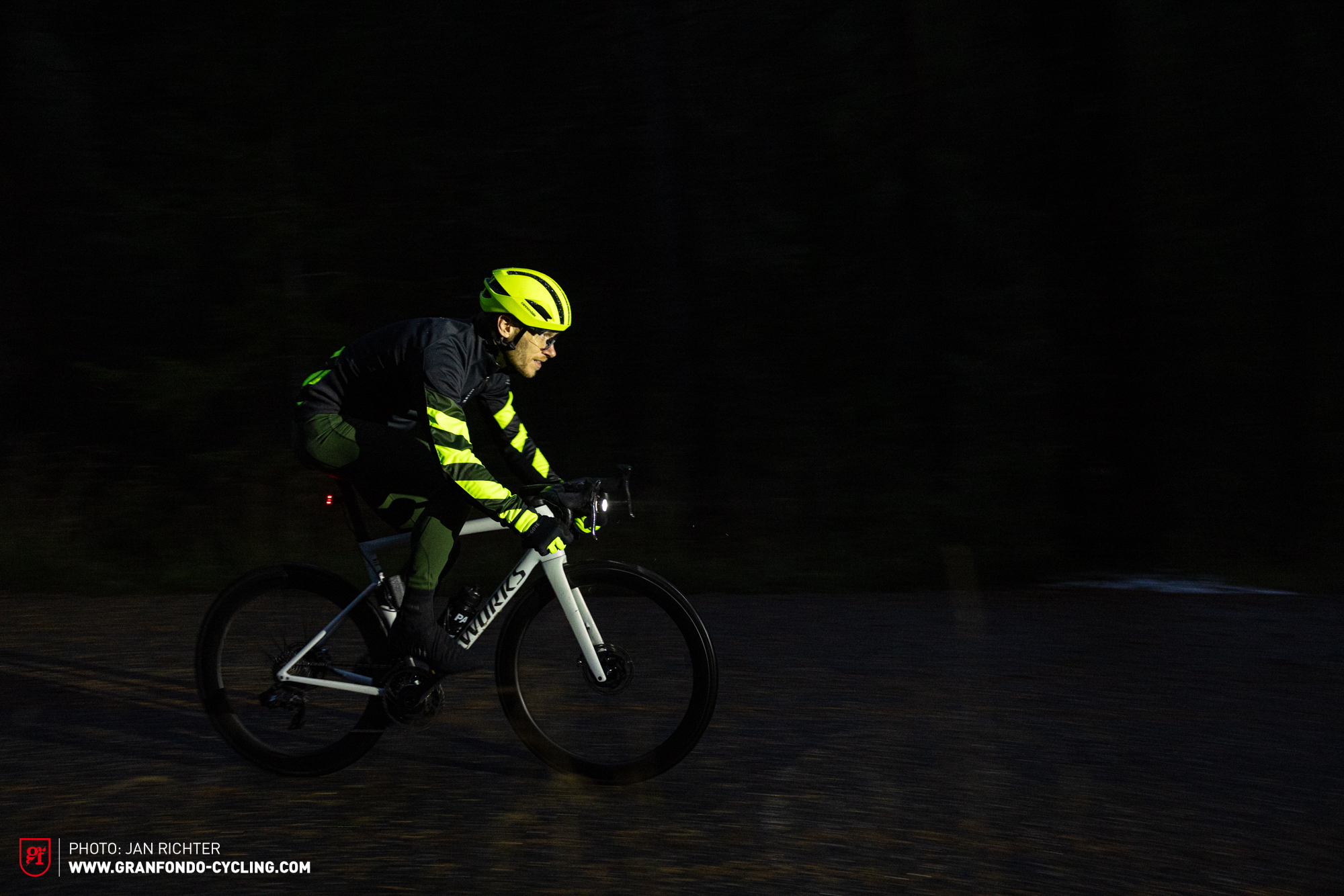
7. No K- or QOM chasing
When it gets dark, it’s time to step things down a notch. Sprints and fast descents are fun, of course, but they can also be quite dangerous in the dark. Riding at night can be fun in different ways, with the mystical, exciting feeling of flying along through the darkness.
8. Preferably as a couple or in a group
As a couple or in a group, you simply feel safer. This is due to the certainty that someone will always be with you if something unexpected happens. And of course, a group of riders are much more visible.
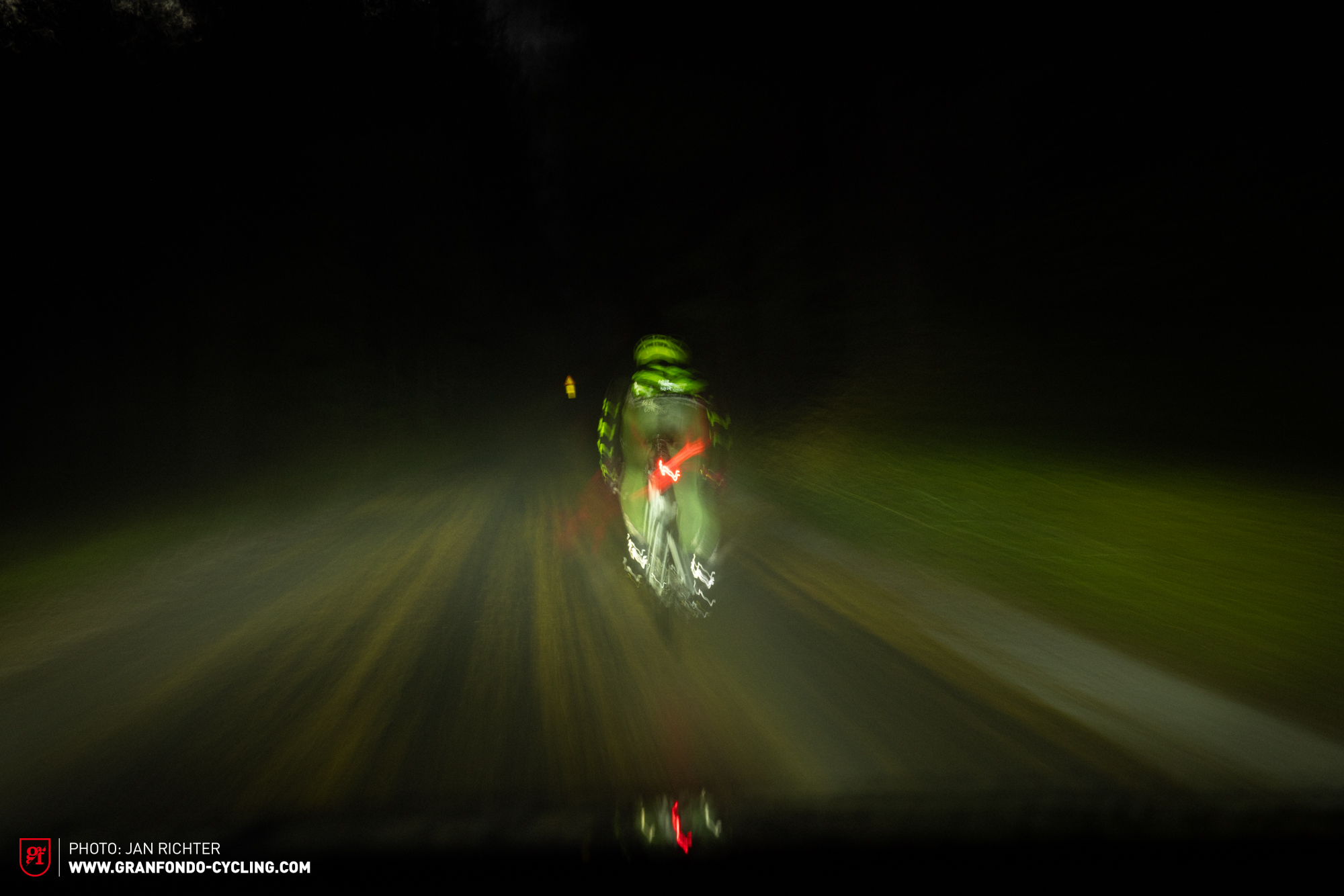
9. Always use protection
Use special face creams and lip balm to moisturise and protect your skin. That is, unless you want to impress the Zwifters with your weather-worn face.
10. Maintenance is key
Show your bike some love and give it a regular clean to remove any salt and grime. Also check that the chain is clean and well-lubricated.
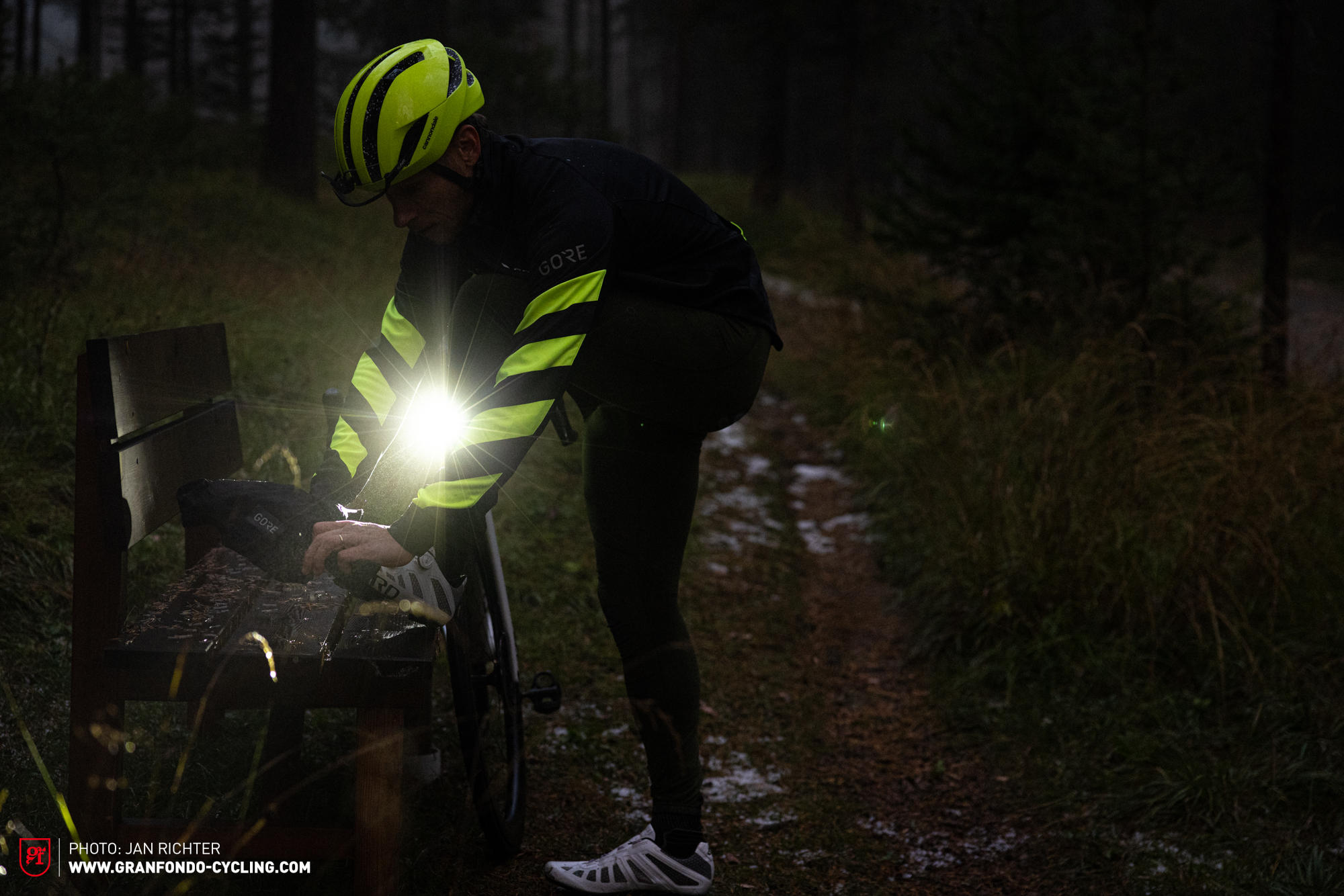
11. Jumping jacks are back
Regular stops to do jumping jacks or similar exercises can help to stimulate blood flow around your body. Doing so helps to keep your hands and feet warm.
Our conclusion on road riding in the dark
Riding your road bike in the dark is a unique experience and can be lots of fun with the right know-how, gear, and preparation. Wearing appropriate kit and using bright lights makes you feel safer and keeps you visible. The other road users will also be grateful if you’re clearly visible. It’s a win-win situation. Don’t forget that you can also wear your high-vis road cycling kit during the day when riding in autumn and winter. With the right combination of riding kit, you’ll be all set for some epic, unforgettable winter rides.
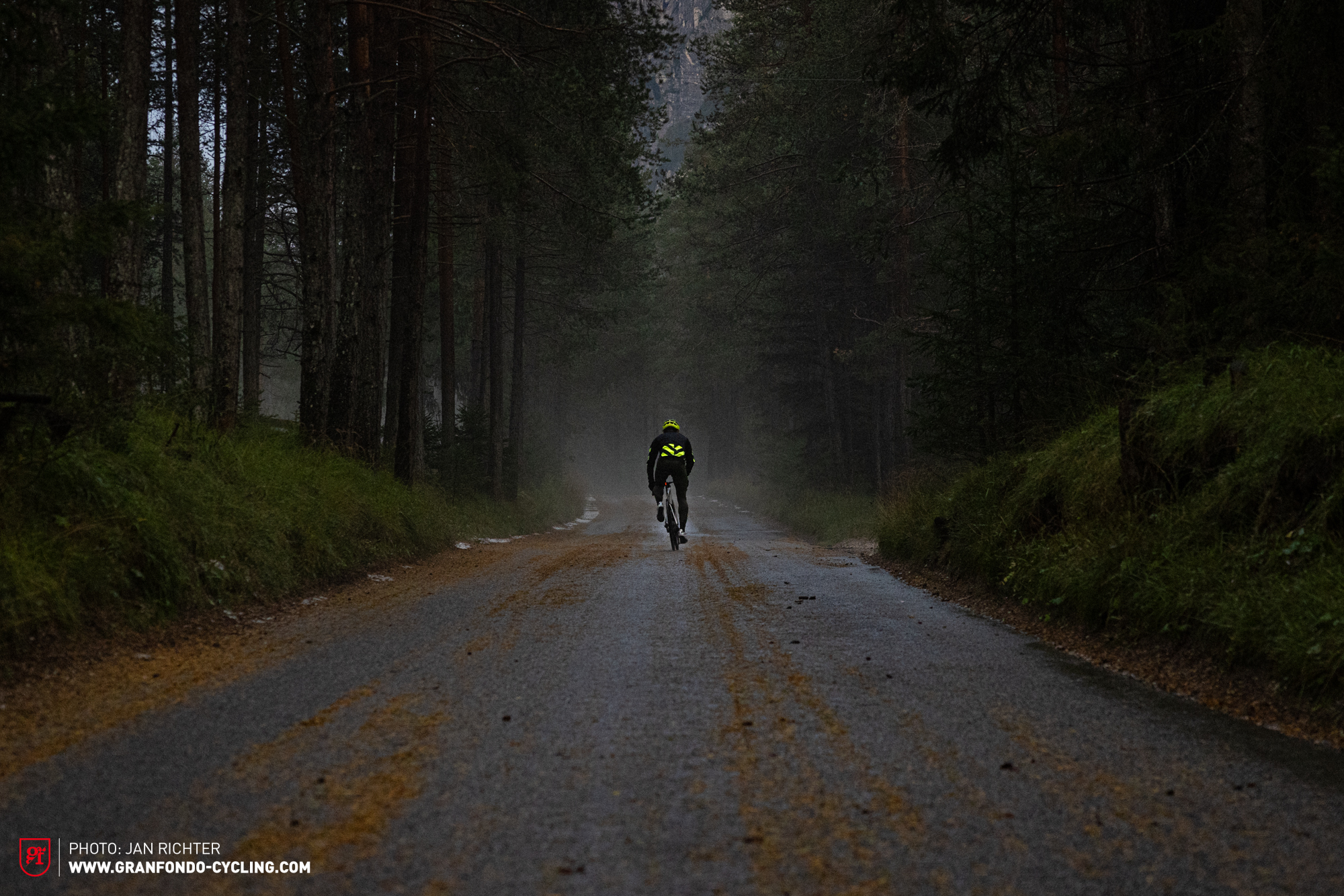
For more information about GOREWEAR products, visit GOREWEAR.com.
Did you enjoy this article? If so, we would be stoked if you decide to support us with a monthly contribution. By becoming a supporter of GRAN FONDO, you will help secure a sustainable future for high-quality cycling journalism. Click here to learn more.
Words: Martin Staffa Photos: Jan Richter







